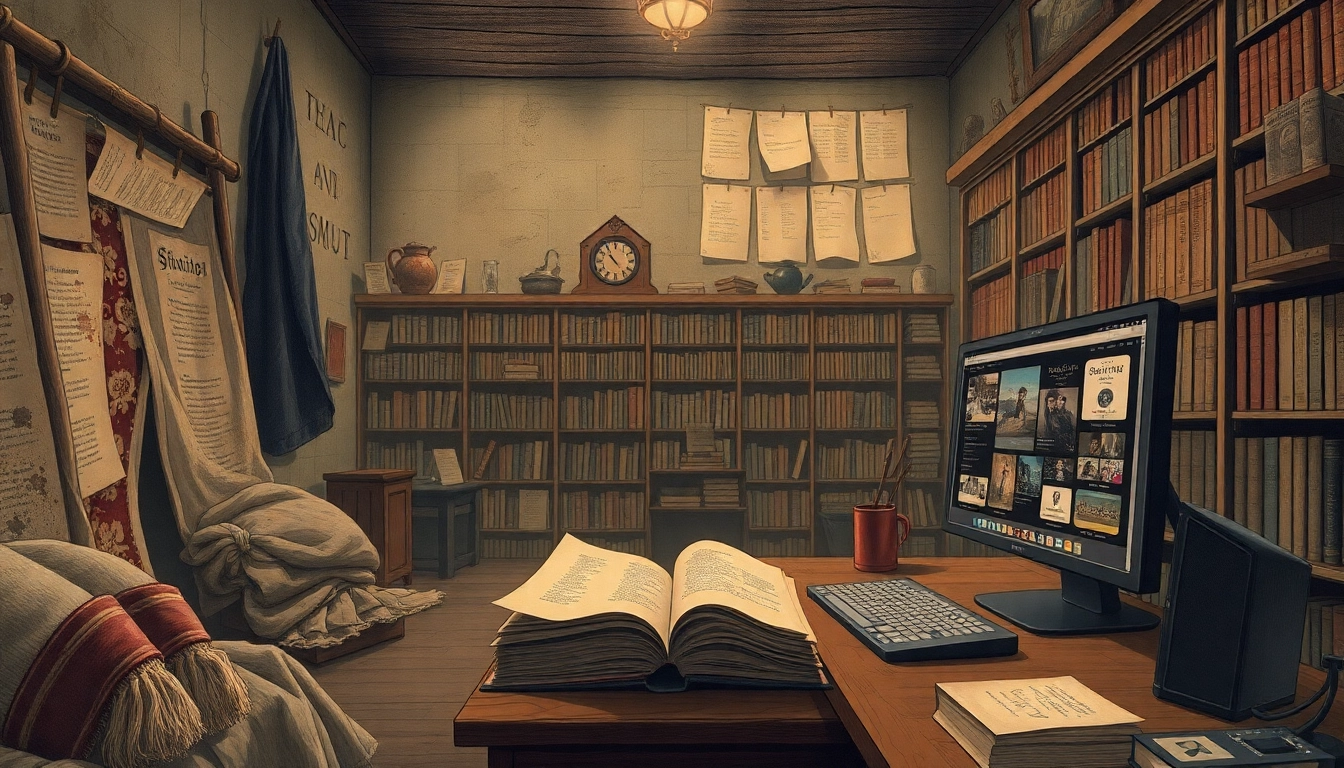Introduction: Understanding “Smut” – Definition and Origins
The term smut has a complex and intriguing history that reflects shifts in cultural attitudes toward morality, sexuality, and censorship. Today, it is primarily associated with adult media—such as explicit movies, provocative art, and literature designed to arouse—yet its origins and evolution reveal a much broader and more nuanced story. Understanding what “smut” truly signifies involves exploring its etymology, historical context, and how perceptions of this term have transformed over centuries. This exploration not only sheds light on the word itself but also offers insight into society’s ongoing relationship with sexuality and censorship.
Historical Roots: From Dirt and Stains in the 17th Century
The earliest known use of the word “smut” dates back to the 17th century, where it was used quite literally to describe dirt, stains, or soot. During this period, the word was associated with physical grime—dirt that clung to clothing, surfaces, or even skin. The term was commonplace in everyday language, often used in rural and urban settings to describe the unclean or soiled. For example, reports from that era mention “smut” in descriptions of soot-covered chimneys or muddy fields, emphasizing its connection to physical filth.
Interestingly, the connotations of dirt and impurity extended metaphorically into moral and social realms. In a predominantly religious and moralistic society, impurity was not only a matter of physical dirt but also of moral degradation. The language of dirt and stain became intertwined with notions of indecency, vice, and moral failing. However, at this stage, “smut” remained firmly rooted in its literal sense, with no explicit connection to sexuality or obscene material.
The 19th Century Shift: From Dirt to Obscenity and Censorship
The transition of “smut” from referring solely to dirt to denoting obscene or indecent material began in the 19th century. This period marked significant social, cultural, and legal shifts that influenced language and morality. As society became more aware of issues surrounding sexuality, morality, and censorship, the word “smut” took on new connotations.
By this time, “smut” increasingly described written or visual material considered scandalous or morally corrupting. Literature, art, and theater faced growing censorship, especially when content was deemed to challenge societal norms. The Victorian era, in particular, was characterized by strict codes of morality, which led to the suppression and criminalization of what was considered “smut.”
During this time, “smut” was often used in legal and social contexts to refer to material that was obscene or indecent. It was considered a scandalous word, associated with vice and moral depravity. The censorship laws of the period aimed to control the spread of smut, resulting in the suppression of various works, some of which, like “Fanny Hill,” became infamous for their explicit content and subsequent bans.
Notable Historical Examples: “Fanny Hill” and Its Impact
One of the most iconic examples of “smut” in literature is John Cleland’s Fanny Hill (1748). Written while Cleland was imprisoned, this novel is often cited as one of the earliest and most prosecuted works of erotic literature. The book vividly describes sexual acts and explores themes of desire, morality, and societal hypocrisy. Due to its explicit content, Fanny Hill faced widespread censorship and was banned in numerous countries.
The controversy surrounding Fanny Hill exemplifies how “smut” was perceived as a threat to moral standards. Despite being considered scandalous and indecent, the book also sparked debates about free expression, censorship, and morality. Over time, it gained recognition as a literary classic, illustrating how perceptions of “smut” can evolve and how works once deemed obscene can become culturally significant.
This historical episode underscores the ongoing tension between societal norms and individual expression, a theme that persists in discussions about “smut” today.
Modern Usage: “Smut” in Media, Art, and Literature Today
In contemporary times, “smut” predominantly refers to media and art designed to arouse or evoke sexual excitement. Movies, magazines, websites, and literature with explicit content are often labeled as “smut” by critics, audiences, or society at large. Unlike the 17th or 19th centuries, where the word carried connotations of dirt or moral failing, today it is more associated with adult entertainment and erotic expression.
However, the term still retains a slightly pejorative undertone, often used to dismiss or criticize explicit material as vulgar or lowbrow. Despite this, the adult entertainment industry has grown exponentially, and “smut” content has become more mainstream and accessible thanks to the internet and digital platforms. This evolution reflects changing societal attitudes toward sexuality—becoming more open and accepting of explicit expression while still grappling with issues of censorship and morality.
Furthermore, the definition of “smut” has expanded to include not only visual media but also literature, art, and even social media content. Erotic art, fan fiction, and adult-themed online communities are now part of the broader “smut” landscape, illustrating a cultural shift toward normalization of adult material.
The Cultural and Social Perception of Smut Over Time
The perception of “smut” has undergone significant transformation over the centuries. In earlier eras, it was regarded with suspicion, fear, and outright condemnation. Societies emphasized the moral dangers of explicit material, associating it with corruption, vice, and moral decay. Laws and social norms aimed to suppress and control such content, reflecting widespread discomfort with sexuality outside societal norms.
In contrast, modern perspectives tend to be more permissive, viewing “smut” as a natural and healthy expression of human sexuality. The sexual revolution of the 20th century, along with advancements in media technology, contributed to destigmatizing explicit content. Today, many people see “smut” as a form of personal freedom, artistic expression, or entertainment.
Nonetheless, debates about “smut” persist, especially concerning its impact on society, relationships, and individual behavior. Issues such as exploitation, consent, and the portrayal of gender roles continue to influence how society perceives and regulates adult media. Cultural attitudes remain diverse, with some groups advocating for stricter censorship and others promoting free expression.
The Role of Censorship and Free Expression in the Evolution of Smut
Censorship has played a central role in shaping the history of “smut.” From the banning of books like Fanny Hill to modern restrictions on explicit content, societies have grappled with balancing moral standards and individual freedoms. Governments, religious institutions, and social groups have all sought to regulate or suppress “smut” at various points in history.
Despite these efforts, technological advancements—such as the printing press, photography, and the internet—have continually challenged censorship. The digital age, in particular, has democratized access to adult content, making it more widespread and harder to control. This ongoing tension between censorship and free expression raises important questions about rights, morality, and societal boundaries.
Legal battles over obscenity laws, age restrictions, and online regulation are ongoing, reflecting the persistent cultural debate over what constitutes acceptable content. These conflicts highlight how “smut” remains a contentious and evolving aspect of society, embodying broader discussions about morality, personal autonomy, and artistic freedom.
Conclusion: The Continuing Transformation of the Term and Its Cultural Significance / The Evolution of Smut: From Dirt Stains to Adult Media
The journey of the word “smut” from its humble beginnings as a descriptor of dirt and stains to its modern association with adult media illustrates societal shifts in morality, censorship, and personal expression. Over centuries, perceptions of “smut” have oscillated between moral panic and acceptance, reflecting broader cultural attitudes toward sexuality and freedom of expression.
Today, “smut” encompasses a diverse range of media—art, literature, film, and digital content—that challenge societal norms and provoke ongoing debates about morality, censorship, and personal choice. As technology continues to evolve and societal attitudes become more liberal, the boundaries surrounding what is considered “smut” are likely to shift further, embracing a more open and nuanced understanding of human sexuality.
Understanding the history and cultural significance of “smut” allows us to appreciate its role not only as a form of entertainment or expression but also as a mirror to societal values and conflicts. The ongoing evolution of this term underscores the importance of balancing moral considerations with individual rights and creative freedom.
For those interested in exploring more about this fascinating topic, further insights can be found at sumt crushon.ai, which offers a comprehensive overview of the history, cultural impact, and contemporary significance of “smut.”

